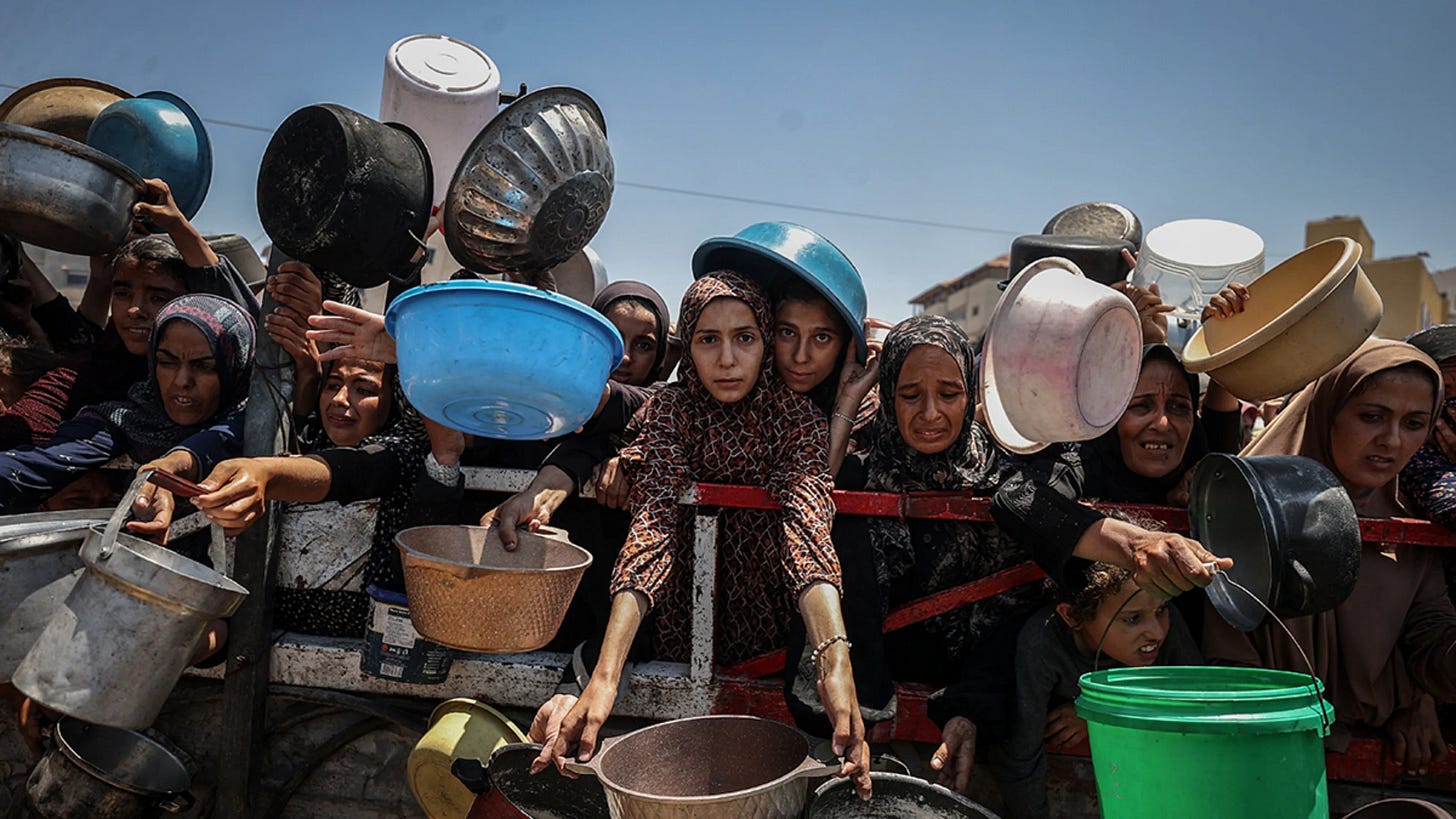Killing fields at the food line: Israel's siege on Gaza's supply chain
Analysis Period: October 7, 2023 - October 2025
Prices of goods in Gaza remain astronomically high, despite the illusion of a ceasefire. A carton of eggs that once cost a family $13.33 now demands $600. A kilogram of chicken has jumped from $16 to $97. A liter of gasoline, which is essential for the generators that power refrigerators and water pumps, has skyrocketed from $6.79 to $250. These aren’t just numbers on a spreadsheet. They’re the mathematical expression of a deliberate starvation campaign waged by Israel and the broader zionist movement.
The data reiterates what Palestinians have been yelling to the world for the last several years: Gaza is being starved. Hyperinflation, which is averaging 695% across 42 tracked food and essential commodities, with median increases of 439%, is pushing families completely out of the marketplace and making necessities totally unaffordable.
Eggs — simple, protein-rich eggs — have increased in price by 4,400%, from $6.67 per kilogram to $300. Gasoline, without which nothing else functions in a territory with destroyed infrastructure, has surged 3,582%. Chilli peppers, a dietary staple in Palestine, are up 2,628%. Even traveling between neighborhoods, something Palestinians must do to seek medical care, check on family, or search for food, now costs 24 times more than it did before the genocide began.
This isn’t inflation in any traditional economic sense. It’s the deliberate, calculated weaponization of hunger.
The siege mechanics are visible in every category. Fresh veal has increased 864%, from $45.55 to $438.90 per kilogram. Fresh lamb jumped 766%. Eggplants, one of the most affordable vegetables before the war, have risen 1,397%. Even cucumbers, perhaps the simplest crop to grow, cost 11 times as much as they did two years ago. When researchers examined water delivery, they found that a 1,000-liter tanker truck — barely enough for a large family’s weekly needs — now costs $231.82, an increase of 866% from the pre-genocide price of $24.
The most recent month showed some price volatility. Between September and October 2025, bread prices crashed 92% while eggs simultaneously increased by 21%. Gas cylinders dropped 89% after spiking to catastrophic levels, and bell peppers fell 81%. But these fluctuations reveal the chaos of a broken market rather than any improvement. When commodities swing wildly from month to month, a population scrambles for whatever nutrition they can access on any given day, at the mercy of Israel’s arbitrary decisions about what crosses the border and when.
Even these catastrophic price increases don’t capture the full horror of Gaza’s food system collapse. The prices assume items are available at all times. Aid delivery data shows that even during the post-ceasefire period, only 1,515 metric tons of assistance arrive daily at Gaza’s crossings, barely enough for 125 trucks to serve 2 million people. Of this already insufficient amount, Israel intercepts or allows the looting of another 2.8%, ensuring that even the meager aid approved never reaches the hungry. Food shipments have decreased 6.5% compared to previous months. Shelter materials are down 17%. Health supplies have dropped 15%.
The zionist movement is deploying typical colonial strategies, using a locally-recruited armed gang called the Abu Shabab Gang and US private security mercenaries to control aid distribution in Gaza, systematically opening fire on starving civilians attempting to reach food distribution centers. At least 14 Palestinians were killed and dozens were injured when armed groups fired on crowds in Rafah seeking aid, with Israeli forces providing weapons, air support through quadcopters and Apache helicopters, and operational coordination. The Abu Shabab gang also loots UN aid trucks under Israeli quadcopter protection, then transports stolen goods to Israeli-controlled areas where they’re sold at exorbitant prices. This creates artificial scarcity that drives up food costs while directly weaponizing hunger. Euro-Med Monitor documented testimonies from over 12 witnesses showing the distribution centers have become killing zones, with armed groups dispersing crowds through violence, tear gas, and live fire rather than distributing aid. By controlling, stealing, and restricting aid access through lethal force, these operations inflate food prices while making acquisition life-threateningly dangerous for Gaza’s civilian population.
What emerges is a precision-engineered famine. Israel controls every calorie that enters Gaza, restricts the fishing zones that might provide protein, bombs the agricultural lands that could grow vegetables, and destroys the water infrastructure necessary for food production and preparation. The result is predictable: a captive population forced to pay prices that would be considered extortionate in the world’s wealthiest nations, while living in rubble with no income, no infrastructure, and no escape.
Behind every percentage point, every price multiplier, every metric ton of intercepted aid, children are going to bed hungry, parents are skipping meals so their kids can eat, and families are making impossible choices between food and medicine. When eggs cost $300 per kilogram and chicken costs $97 (prices that would strain families even in Mamdani’s in New York), how do Palestinians with zero income and destroyed livelihoods feed their children?



